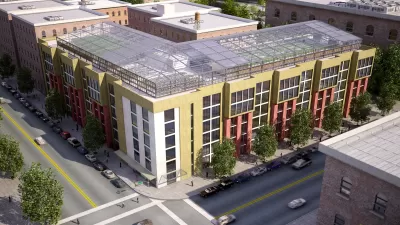Although the political optics are hard to see, Daniel Hertz argues that policies like inclusionary zoning need to be strengthened by orders of magnitude to have more than a token impact on housing affordability.

Few will argue with Daniel Hertz's basic premise: that major American cities face an affordability crisis with wide-ranging effects on economic mobility, race relations, homelessness, and our very conception of what urban life means. Hertz makes the case that current policies to encourage affordable development, while admirable, are embarrassingly under-powered.
In the face of massive deficits in the availability of affordable housing—for the middle as well as lower classes—"IZ needs to be reframed as not a centerpiece, but a minor part of an affordable housing agenda that actually serves everyone who needs help." That agenda might include measures like direct taxes on rising residential property values (to combat speculation) and funding Housing Choice Vouchers by dropping mortgage interest tax deductions for high-income homeowners.
Hertz concludes, "There is no way to argue that inclusionary zoning is coming close to meeting the demand for below-market housing—or, importantly, that it will ever be able to do so. A hundred and forty [affordable] units per year in San Francisco is not off by ten percent, or fifty percent, or even just one order of magnitude [...] The fact that IZ may be on the edge of what is politically possible today should not blind us to the fact that the cities and neighborhoods we envision require vastly more ambition."
FULL STORY: Inclusionary zoning has a scale problem

Rethinking Redlining
For decades we have blamed 100-year-old maps for the patterns of spatial racial inequity that persist in American cities today. An esteemed researcher says: we’ve got it all wrong.

Planetizen Federal Action Tracker
A weekly monitor of how Trump’s orders and actions are impacting planners and planning in America.

Montreal Mall to Become 6,000 Housing Units
Place Versailles will be transformed into a mixed-use complex over the next 25 years.

Santa Clara County Dedicates Over $28M to Affordable Housing
The county is funding over 600 new affordable housing units via revenue from a 2016 bond measure.

Why a Failed ‘Smart City’ Is Still Relevant
A Google-backed proposal to turn an underused section of Toronto waterfront into a tech hub holds relevant lessons about privacy and data.

When Sears Pioneered Modular Housing
Kit homes sold in catalogs like Sears and Montgomery Ward made homeownership affordable for midcentury Americans.
Urban Design for Planners 1: Software Tools
This six-course series explores essential urban design concepts using open source software and equips planners with the tools they need to participate fully in the urban design process.
Planning for Universal Design
Learn the tools for implementing Universal Design in planning regulations.
City of Camden Redevelopment Agency
City of Astoria
Transportation Research & Education Center (TREC) at Portland State University
Regional Transportation Commission of Southern Nevada
Toledo-Lucas County Plan Commissions




























